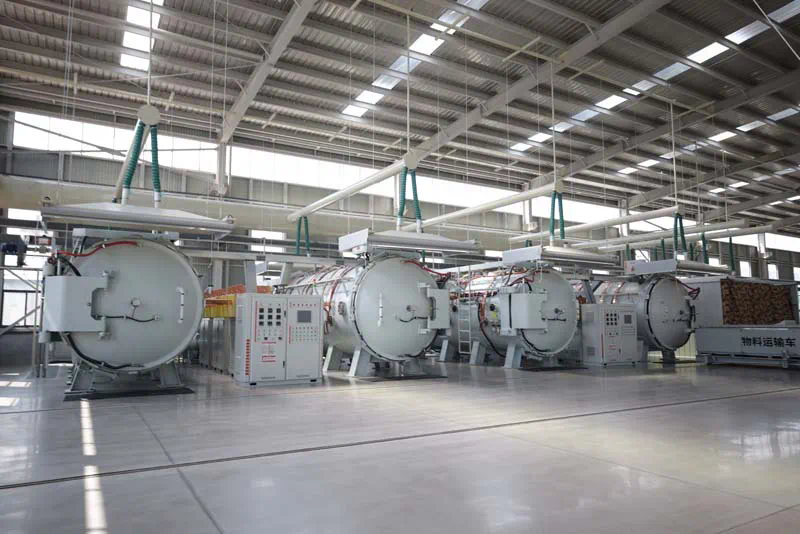Carborundum, known scientifically as silicon carbide (SiC), has a rich history and a promising future that encompasses a variety of applications, from industrial to technological advancements. This article will delve into the legacy of silicon carbide, exploring its historical significance, properties, production methods, and the innovative future that lies ahead for this remarkable material.
Silicon carbide was first synthesized in 1891 by the American inventor Edward G. Acheson, who was seeking to create a new abrasive material. Acheson’s discovery stemmed from his experimentation with carbon and silica, leading to the formation of this unique compound, which offered superior hardness and thermal stability compared to other materials available at the time. The initial applications of silicon carbide were primarily in the production of abrasives, grinding wheels, and cutting tools, capitalizing on its exceptional hardness.
Over the decades, the understanding of silicon carbide expanded, leading to its use in various industries beyond abrasives. The semiconductor industry began to recognize the potential of SiC in the 1950s when researchers discovered its ability to withstand high temperatures and voltages, making it an ideal candidate for electronic devices. As technology advanced, so did the applications of silicon carbide, particularly in power electronics, where it has become a cornerstone material.
The unique properties of silicon carbide contribute to its wide range of applications. It boasts a high thermal conductivity, excellent electrical insulation, and remarkable mechanical strength. These characteristics make SiC an attractive choice for high-power and high-frequency devices, especially in electric vehicles (EVs), renewable energy systems, and power conversion technologies. With the relentless pursuit of efficiency and performance in modern engineering, silicon carbide is stepping into the spotlight as a critical component for future innovations.
The production of silicon carbide has evolved significantly since its inception. Initially produced through a process known as the Acheson process, which involved heating silica and carbon to high temperatures in an electric furnace, the manufacturing techniques have been refined and adapted to meet the growing demands of various industries. Today, there are several methods for producing silicon carbide, including the modified Acheson process, chemical vapor deposition (CVD), and sintering techniques. Each method has its advantages and suitability for specific applications.
One of the most significant developments in silicon carbide technology has been its application in the automotive industry. As electric vehicles gain popularity, the demand for efficient power electronics has surged. Silicon carbide devices are instrumental in improving the efficiency of power converters, inverters, and battery chargers, enabling faster charging times and extended driving ranges. Manufacturers are increasingly integrating SiC components into their EV designs, recognizing the potential for enhanced performance and reduced energy consumption.
In addition to the automotive sector, silicon carbide is making waves in the renewable energy landscape. Solar inverters and wind turbine controllers benefit from SiC’s ability to operate at higher temperatures and voltages, resulting in more compact and efficient systems. The transition to sustainable energy sources necessitates advanced technology that can handle the increasing demands of energy conversion and storage, positioning silicon carbide as a vital player in this evolution.
Furthermore, the aerospace and defense industries are also harnessing the capabilities of silicon carbide. Its high thermal resistance and durability make it suitable for applications in harsh environments, such as satellite systems and military equipment. As defense technologies advance, silicon carbide is expected to play a crucial role in enhancing the reliability and performance of critical systems.

Research and development in the field of silicon carbide continue to push the boundaries of what is possible. Scientists and engineers are actively exploring ways to enhance the material properties of SiC, aiming for even higher efficiencies and improved performance characteristics. Innovations such as GaN-on-SiC technology are emerging, combining gallium nitride with silicon carbide to create hybrid devices that leverage the strengths of both materials. This ongoing research contributes to the expanding portfolio of applications for silicon carbide, solidifying its position as a transformative material for the future.
As we look towards the future, the potential applications for silicon carbide seem almost limitless. The shift towards electrification across various sectors, coupled with the global emphasis silicon carbide semiconductor on sustainability, will continue to drive the demand for SiC-based technologies. From electric vehicles to renewable energy systems and beyond, silicon carbide is poised to be at the forefront of innovation, enabling advancements that were once thought to be unattainable.
The legacy of silicon carbide is one of resilience and adaptability. From its humble beginnings as an abrasive material to its current status as a key player in cutting-edge technology, SiC has proven its worth in numerous applications. As industries evolve and new challenges arise, the importance of silicon carbide will only grow, highlighting the need for continued investment in research and development.
To fully appreciate the impact of silicon carbide, it is essential to consider its role within the context of modern engineering and technology. As the world grapples with issues such as climate change and energy efficiency, materials like silicon carbide offer solutions that can help address these pressing concerns. By facilitating the transition to cleaner energy sources and contributing to the development of more efficient electronic devices, SiC stands as a testament to the power of innovation and the importance of materials science in shaping a sustainable future.
In conclusion, Carborundum, or silicon carbide, embodies a rich legacy and a bright future. Its remarkable properties and versatile applications make it a vital material in numerous industries, from automotive to aerospace. As technology continues to advance, silicon carbide will play an increasingly important role in driving innovation and addressing the challenges of tomorrow. The ongoing research and development in this field will ensure that silicon carbide remains at the forefront of materials science, paving the way for a more efficient and sustainable world.
https://smartfactoryinsights.com/


